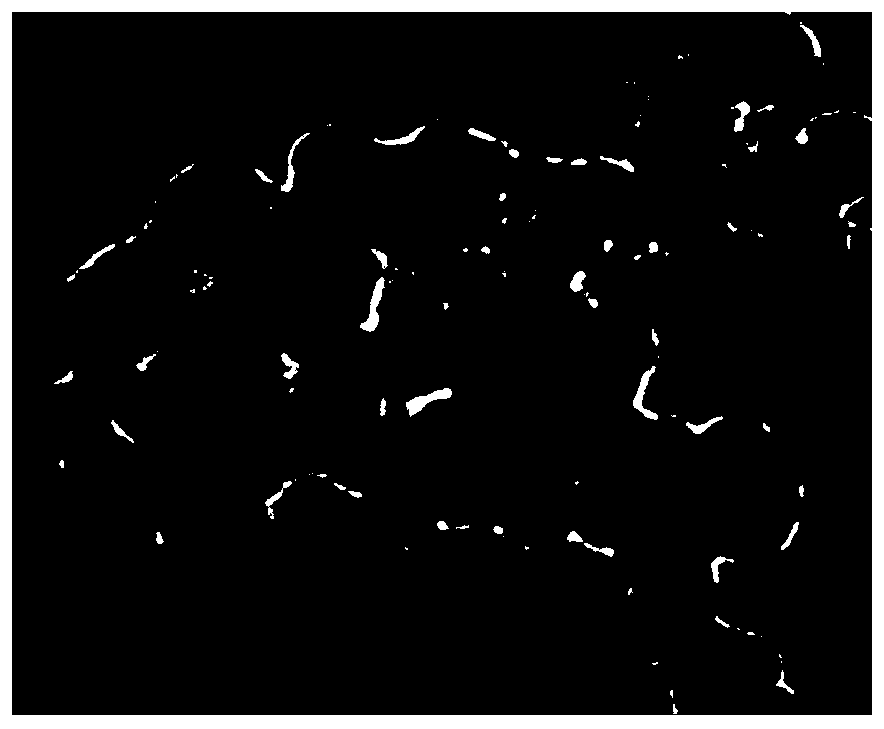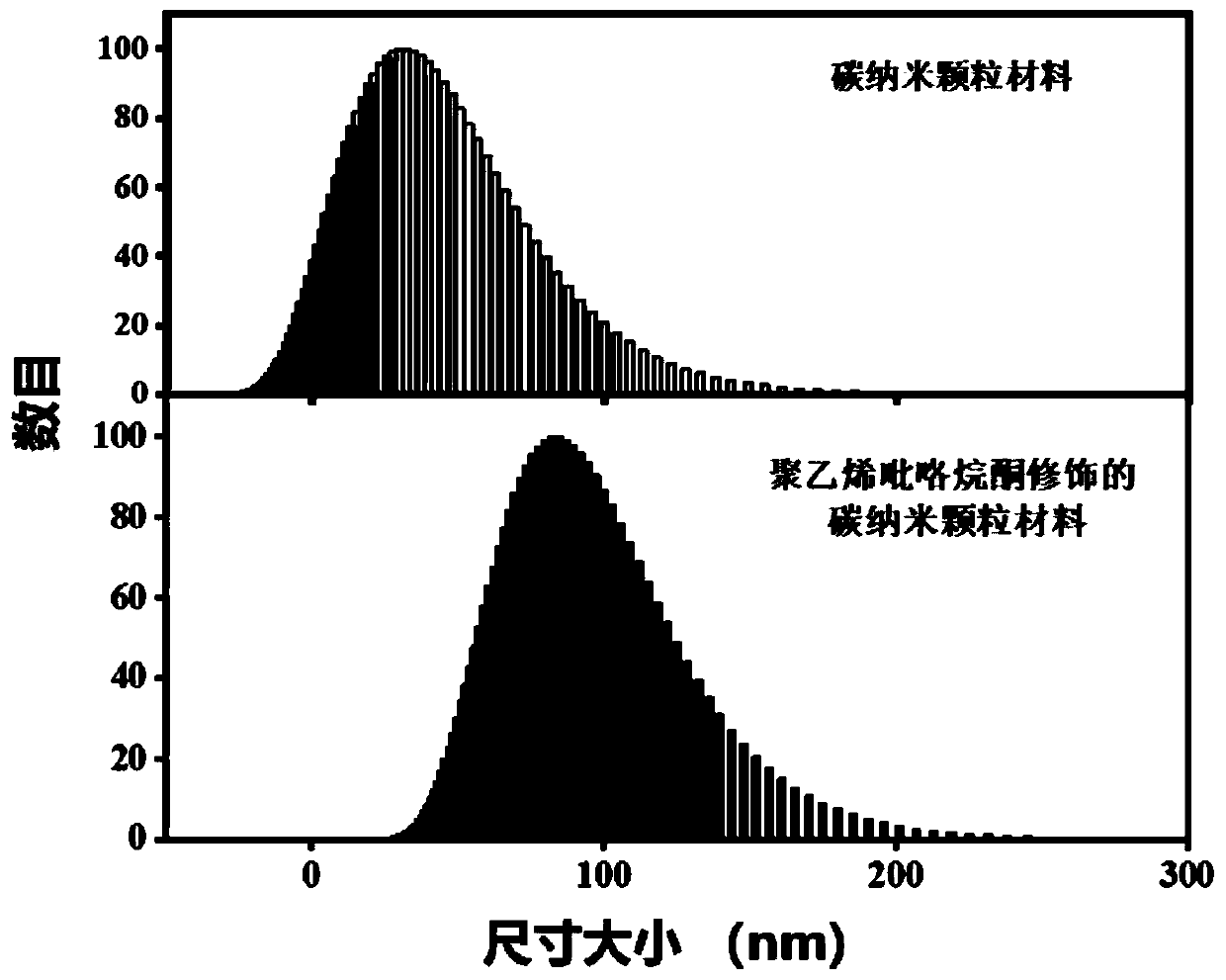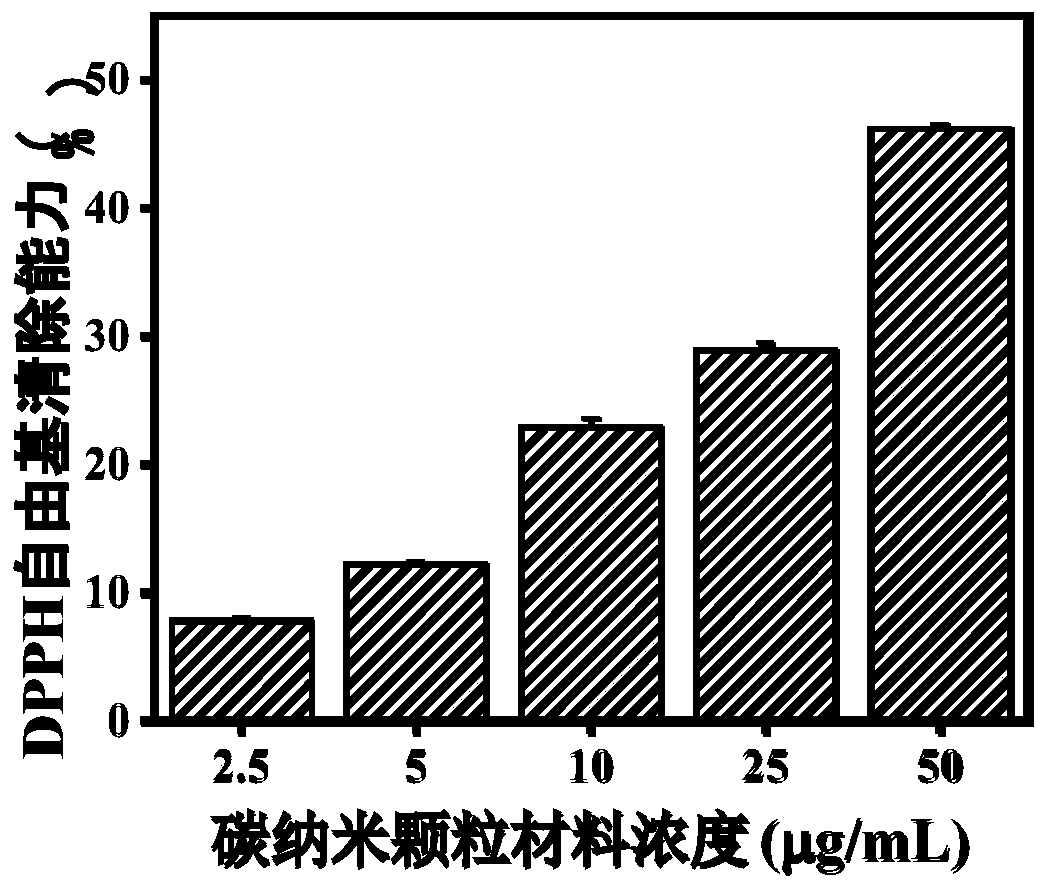Carbon nanoparticles for scavenging free radicals as well as preparation method and application thereof
A carbon nanoparticle and free radical technology, applied in the field of free radical scavenging, radiation protection, and nanomaterials, can solve the problems of inability to target the gastrointestinal tract, short drug effect time, large toxic and side effects, etc. Compatibility, long duration of drug effect, fast degradation effect
- Summary
- Abstract
- Description
- Claims
- Application Information
AI Technical Summary
Problems solved by technology
Method used
Image
Examples
preparation example Construction
[0044] A specific embodiment of the present invention discloses a method for preparing carbon nanoparticles used as a free radical scavenger, comprising the following steps:
[0045] Step 1: Add 20-50 milliliters of concentrated nitric acid (mass fraction is 67%) in 40-60 milligrams of carbon raw materials;
[0046] Step 2: reflux at 85-95°C for 5-24 hours;
[0047] Step 3: Cool the mixture down to room temperature, centrifuge at 2000 rpm for 10 minutes, discard the precipitate and keep the supernatant, and remove unreacted carbon raw materials;
[0048] Step 4: The supernatant was centrifuged at 12000 rpm for 10 minutes to obtain a precipitate, which was washed with deionized water until neutral to obtain carbon nanoparticles.
[0049] Further, the carbon raw material includes one or more of carbon black, bamboo charcoal and activated carbon.
[0050] Compared with the prior art, the carbon nanoparticles prepared by the above method have a graphene-like structure, and the c...
Embodiment 1
[0070] (1) Add 20 milliliters of nitric acid (67%) to 40 milligrams of carbon black (from acetylene), and reflux at 85° C. for 24 hours;
[0071] (2) The mixture was cooled down to room temperature, and centrifuged at 2000rpm for 10 minutes;
[0072] (3) Centrifuge the supernatant at 12,000 rpm for 10 minutes, and wash the obtained precipitate with deionized water to pH=6.5;
[0073] (4) Disperse the precipitate in ultrapure water to obtain an aqueous solution of the carbon nanoparticle material, and the concentration of the aqueous solution of the carbon nanoparticle is 1.5 mg / mL;
[0074] (5) Polyethylene glycol succinate is dissolved in ultrapure water to obtain an aqueous solution of polyethylene glycol succinate, and the concentration of the aqueous polyethylene glycol succinate is 1.5 mg / mL;
[0075] (6) Mix 20 milliliters of carbon nanoparticle material aqueous solution with 20 milliliters of polyethylene glycol succinate aqueous solution, centrifuge the mixed solution...
Embodiment 2
[0077] (1) Add 50 milliliters of nitric acid (67%) to 60 milligrams of activated carbon (from acetylene), and reflux at 95° C. for 5 hours;
[0078] (2) The mixture was cooled down to room temperature, and centrifuged at 2000rpm for 10 minutes;
[0079] (3) Centrifuge the supernatant at 12,000 rpm for 10 minutes, and wash the obtained precipitate with deionized water to pH=7.5;
[0080] (4) Disperse the precipitate in ultrapure water to obtain an aqueous solution of the carbon nanoparticle material, and the concentration of the aqueous solution of the carbon nanoparticle is 1.5 mg / mL;
[0081] (5) Dissolving the polylactic acid-glycolic acid copolymer in ultrapure water to obtain a polylactic acid-glycolic acid copolymer aqueous solution, the concentration of the polylactic acid-glycolic acid copolymer aqueous solution is 1.5 mg / mL;
[0082] (6) Mix 20 milliliters of carbon nanoparticle material aqueous solution with 20 milliliters of polylactic acid-glycolic acid copolymer a...
PUM
| Property | Measurement | Unit |
|---|---|---|
| Hydrated particle size | aaaaa | aaaaa |
| Concentration | aaaaa | aaaaa |
| Particle size | aaaaa | aaaaa |
Abstract
Description
Claims
Application Information
 Login to View More
Login to View More - R&D
- Intellectual Property
- Life Sciences
- Materials
- Tech Scout
- Unparalleled Data Quality
- Higher Quality Content
- 60% Fewer Hallucinations
Browse by: Latest US Patents, China's latest patents, Technical Efficacy Thesaurus, Application Domain, Technology Topic, Popular Technical Reports.
© 2025 PatSnap. All rights reserved.Legal|Privacy policy|Modern Slavery Act Transparency Statement|Sitemap|About US| Contact US: help@patsnap.com



